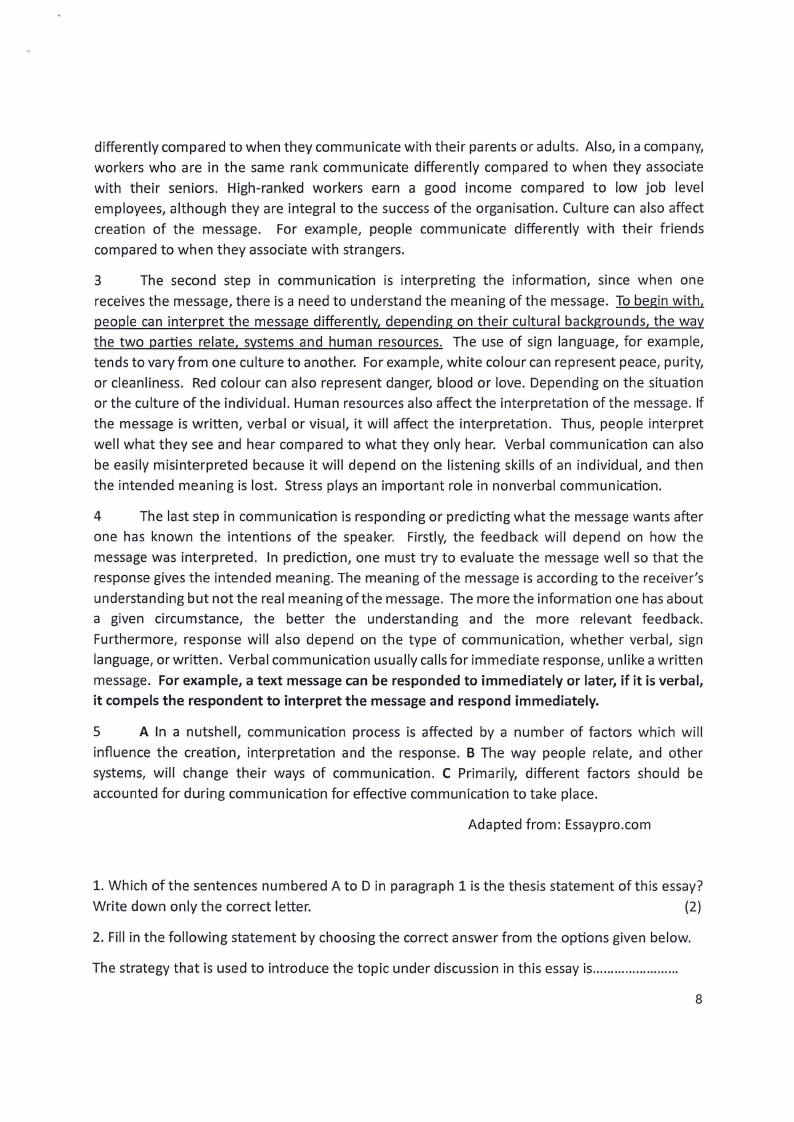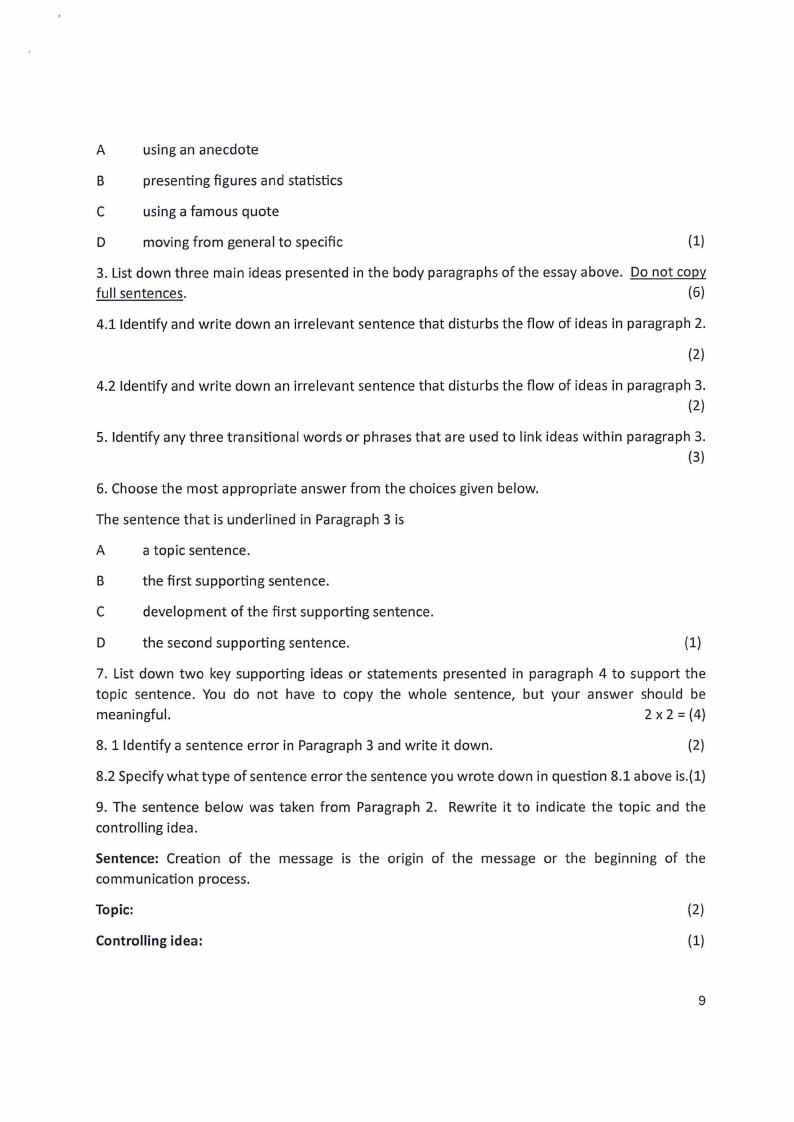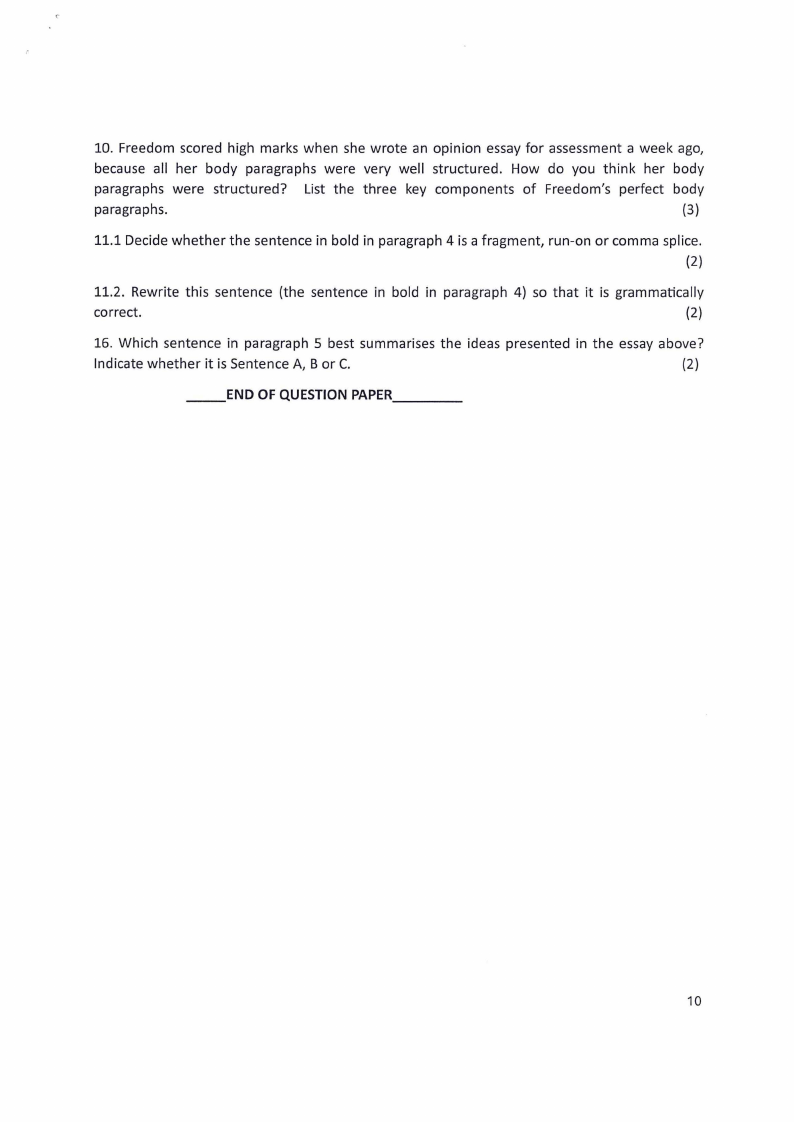
differently compared to when they communicate with their parents or adults. Also, in a company,
workers who are in the same rank communicate differently compared to when they associate
with their seniors. High-ranked workers earn a good income compared to low job level
employees, although they are integral to the success of the organisation. Culture can also affect
creation of the message. For example, people communicate differently with their friends
compared to when they associate with strangers.
3
The second step in communication is interpreting the information, since when one
receives the message, there is a need to understand the meaning of the message. To begin with,
people can interpret the message differentlv, depending on their cultural backgrounds, the way
the two parties relate, systems and human resources. The use of sign language, for example,
tends to vary from one culture to another. For example, white colour can represent peace, purity,
or cleanliness. Red colour can also represent danger, blood or love. Depending on the .situation
or the culture of the individual. Human resources also affect the interpretation of the message. If
the message is written, verbal or visual, it will affect the interpretation. Thus, people interpret
well what they see and hear compared to what they only hear. Verbal communication can also
be easily misinterpreted because it will depend on the listening skills of an individual, and then
the intended meaning is lost. Stress plays an important role in nonverbal communication.
4
The last step in communication is responding or predicting what the message wants after
one has known the intentions of the speaker. Firstly, the feedback will depend on how the
message was interpreted. In prediction, one must try to evaluate the message well so that the
response gives the intended meaning. The meaning of the message is according to the receiver's
understanding but not the real meaning of the message. The more the information one has about
a given circumstance, the better the understanding and the more relevant feedback.
Furthermore, response will also depend on the type of communication, whether verbal, sign
language, or written. Verbal communication usually calls for immediate response, unlike a written
message. For example, a text message can be responded to immediately or later, if it is verbal,
it compels the respondent to interpret the message and respond immediately.
5
A In a nutshell, communication process is affected by a number of factors which will
influence the creation, interpretation and the response. B The way people relate, and other
systems, will change their ways of communication. C Primarily, different factors should be
accounted for during communication for effective communication to take place.
Adapted from: Essaypro.com
1. Which of the sentences numbered A to Din paragraph 1 is the thesis statement of this essay?
Write down only the correct letter.
(2)
2. Fill in the following statement by choosing the correct answer from the options given below.
The strategy that is used to introduce the topic under discussion in this essay is.......................
8


























